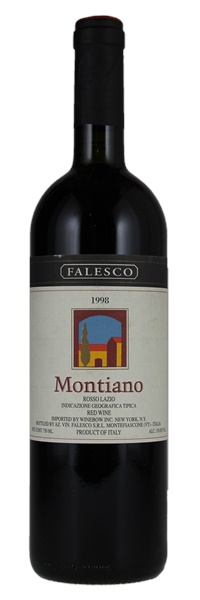Estimate

...the nose offers up glorious aromas of smoked meats, cassis, chocolate, and vanillin. Spectacular richness, combined with beautifully integrated acidity, tannin, and wood,..
A luscious, layered, posh, international-style Italian red, with a beautifully oaky character that meshes well with the deep fruit flavors. Has great concentration and a long finish. Tannic, but well balanced.
Roasted, toasted aromas are jammy without any loss of freshness. Superlatively sweet in flavor, with a light merlot herbaceousness; precise and delineated, with a texture of noteworthy richness.

...the nose offers up glorious aromas of smoked meats, cassis, chocolate, and vanillin. Spectacular richness, combined with beautifully integrated acidity, tannin, and wood,..
A luscious, layered, posh, international-style Italian red, with a beautifully oaky character that meshes well with the deep fruit flavors. Has great concentration and a long finish. Tannic, but well balanced.
Roasted, toasted aromas are jammy without any loss of freshness. Superlatively sweet in flavor, with a light merlot herbaceousness; precise and delineated, with a texture of noteworthy richness.

...the nose offers up glorious aromas of smoked meats, cassis, chocolate, and vanillin. Spectacular richness, combined with beautifully integrated acidity, tannin, and wood,..
A luscious, layered, posh, international-style Italian red, with a beautifully oaky character that meshes well with the deep fruit flavors. Has great concentration and a long finish. Tannic, but well balanced.
Roasted, toasted aromas are jammy without any loss of freshness. Superlatively sweet in flavor, with a light merlot herbaceousness; precise and delineated, with a texture of noteworthy richness.

...the nose offers up glorious aromas of smoked meats, cassis, chocolate, and vanillin. Spectacular richness, combined with beautifully integrated acidity, tannin, and wood,..
A luscious, layered, posh, international-style Italian red, with a beautifully oaky character that meshes well with the deep fruit flavors. Has great concentration and a long finish. Tannic, but well balanced.
Roasted, toasted aromas are jammy without any loss of freshness. Superlatively sweet in flavor, with a light merlot herbaceousness; precise and delineated, with a texture of noteworthy richness.

...the nose offers up glorious aromas of smoked meats, cassis, chocolate, and vanillin. Spectacular richness, combined with beautifully integrated acidity, tannin, and wood,..
A luscious, layered, posh, international-style Italian red, with a beautifully oaky character that meshes well with the deep fruit flavors. Has great concentration and a long finish. Tannic, but well balanced.
Roasted, toasted aromas are jammy without any loss of freshness. Superlatively sweet in flavor, with a light merlot herbaceousness; precise and delineated, with a texture of noteworthy richness.

...the nose offers up glorious aromas of smoked meats, cassis, chocolate, and vanillin. Spectacular richness, combined with beautifully integrated acidity, tannin, and wood,..
A luscious, layered, posh, international-style Italian red, with a beautifully oaky character that meshes well with the deep fruit flavors. Has great concentration and a long finish. Tannic, but well balanced.
Roasted, toasted aromas are jammy without any loss of freshness. Superlatively sweet in flavor, with a light merlot herbaceousness; precise and delineated, with a texture of noteworthy richness.